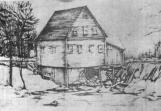1
The colonization and economic development of Sutton is historically very similar to that of other small towns in the Eastern Townships. This part of the province was developed along the township model nearly two centuries after the settlement by the French in the seigniories along the Saint-Lawrence Seaway.Sutton, however, benefited from an additional developmental tool: the railway. This means of transportation first appeared in the southern parts of Québec in 1837 and played a key role in the productivity of the area. In fact, it allowed the people of Sutton to contemplate new possibilities for growth.
3
Sutton is a small town of approximately 3400 inhabitants in the southern part of the province which borders with Vermont (U.S.A.) The centre of this town once called Sutton Flat lies in the valley, at the foot of Mont-Sutton which is part of the Appalachian chain.5
It is a popular tourist destination in the Eastern Townships because of its vast skiing area, its multiple veloroutes and its many hiking trails. Sutton is approximately an hour outside of Montreal.7
Let's forget for a moment the ease with which we travel today and think back to a time and era where the stagecoach was the only means of public transportation.9
When the railway was inaugurated, the town of Sutton was part of the Sutton townships that was founded in 1802. At the end of the 18th century, the first settlers who came to the area were mainly Americans having chosen to leave the U.S over the two decades that followed the American War of Independence.At this point in history, be it for political, economical or opportunistic reasons or out of loyalty to the King, approximately 50,000 loyalists left the United States. Of these 50,000, approximately 7,000 chose to settle in the province of Québec. The British Crown refused to give them the land which bordered with the states of Vermont and New Hampshire fearing that this area was simply to volatile and the potential for fighting to great.
It was only with the Constitutional Act containing Crown Land distribution dispositions signed in 1791 that these plots of land were at last awarded to rightful owners. Several of the beneficiaries of the land claims had not waited for the letters that named them as owners, however, as they had settled on their chosen lots well before 1802.
Thomas Shepard was one of these men. He settled in Abercorn in 1791 and built the first grain mill in the township in 1799. Abercorn is one of the first colonial sites in the Sutton Township.






